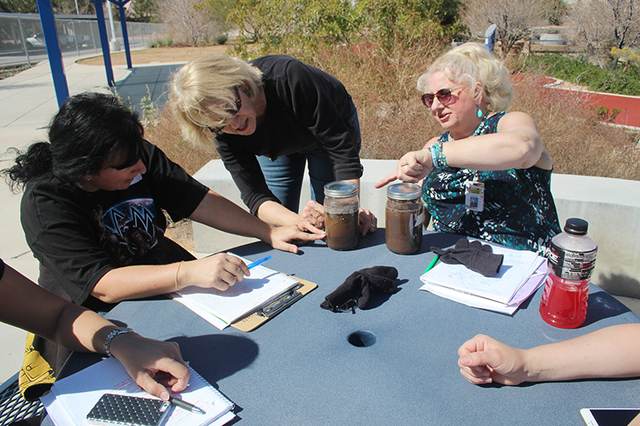
The University of Nevada Cooperative Extension office is growing one of the area’s best kept secrets. The Cooperative’s secret is approximately 3½ acres devoted primarily to a Demonstration and Test Garden.
“We’re very fortunate in Clark County to have this,” said professor M.L. Robinson, University of Nevada Cooperative Extension horticulture specialist. The County Extension office is at 8050 Paradise Road. “Most Extension offices are stuck in buildings with nothing around them.”
The garden, on the north end of the facility, is sectioned into different specialty areas and highlights plants that can grow successfully in the Southern Nevada climate. The garden features over 1,000 species of native and desert-appropriate plants, all labeled with the common as well as the scientific name.
The Extension has access to more than 250 certified master gardeners to help manage the various areas.
“This is an outdoor teaching laboratory,” Robinson said about the garden, which is open to the public. “It’s really a luxury to be able to walk out and demonstrate how to do things, like pruning trees.”
The garden provides a palm demonstration area and cactus garden both featuring multiple varieties of the same species.
“We have one of the largest collections of palms,” said professor Angela O’Callaghan, University of Nevada Cooperative Extension social horticulture specialist, about the more than 50 different species. “You can find out all about them. You can see how they grow and how much space they require.”
According O’Callaghan over 60 percent of the plants are drought-tolerant.
“We try and cover all the things you can grow here in the Mojave,” O’Callaghan said. “A lot of people are under the assumption you can’t grow anything here and that couldn’t be more wrong. You can virtually grow anything here.”
Other sectioned areas in the garden include varieties of roses, ornamental plants and herbs. An orchard area showcases fruit-bearing trees, such as apple and pear. There is also a children’s garden offering education opportunities for grades second through fifth.
“Everything growing in the area was planted by the children,” O’Callaghan said, pointing to the middle of the garden where children typically plant corn, beans and squash. “They can see where their food comes from.”
With a native wash area running through the property, the area naturally collects water, allowing the extension office to feature plants that thrive without irrigation. Other large demonstration areas throughout the garden display different types of irrigation, mulch and composting.
“Extension offices very rarely have a chance to do big demonstration areas,” O’Callaghan said. “I don’t know of any other place where you can see eight different kinds of composters and find out what works best in your area.”
A quarter-mile walking path winds through the displays. The path has six different exercise machines every 100 feet.
“People come in on their lunch hour, walk their mile and go eat lunch,” O’Callaghan said. “You’re not going to find anything like this anywhere. It’s very unique.”